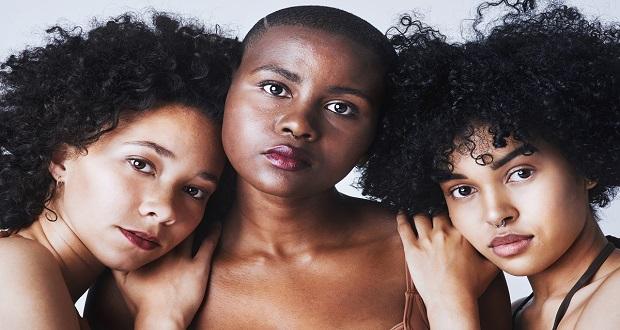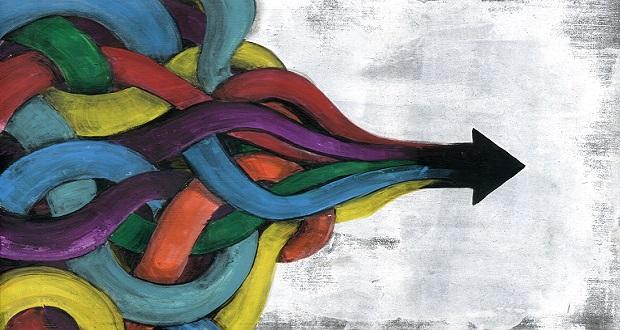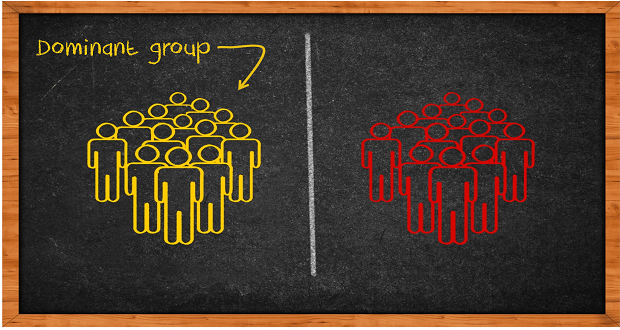
Peeling away my jacket from my shoulders on an unseasonably warm autumn afternoon, I settled across the table from a girlfriend, the mid-afternoon sun painting her face a warm caramel.
“Hey!” Jade* smiled as she raised her glass to meet mine, beaded droplets of condensation wetting her palms. “Glad you could make it.” I smiled in return, my fingertips drumming softly over the laminated menus our server had just laid out before us. My eyes came to rest on the thick, ebony twists that hung neatly past her shoulders, gracefully framing her face.
A new addition.
“I love your hair!” I patted my own Afro, circling the coils at the nape of my neck. I was also planning to braid my own hair soon, in favor of more protective styling in the cooler, more frigid months.
“Thank you,” she grinned, before a slight crease formed along her forehead. She sighed. “I just wonder what the office will say.”
Jade didn’t need to expand on that thought— I understood exactly where she was coming from. As a Black woman, and particularly as a Black woman who chooses to predominately wear my hair in its natural, kinky curly state, I could understand the anxiety of showing up to work with a “new” hairstyle, and navigating the usual questions and comments.
How long did that style take? I wish my hair could do that! I liked your hair better straight. Why did you change it? Can I touch it? Your hair looks…interesting today.
As a Black woman, and particularly as a Black woman who chooses to predominately wear my hair in its natural, kinky curly state, I could understand the anxiety of showing up to work with a “new” hairstyle, and navigating the usual… Share on XEach of these are comments or questions that I, or my close friends, have heard in professional or academic spaces. And, while many questions and comments may be sparked by curiosity, it can be mentally exhausting to prepare for, crafting careful responses to comments that might not be so well-intentioned or curious.
Jade’s remarks brought back my own reflections from nearly 6 years ago, when I cut off my straight, shoulder length hair, leaving only 1 to 2 inches of new curls, waves, and kinks. I remember the mixed emotions of excitement, worry, fear, and freedom I felt. I had not had short hair – or seen my natural hair texture – since I was 5 years old. One of my first thoughts was, “What are people going to say at work?”
It turns out, Jade and I are not alone in our concerns, and for good reason: In 2017, the Perception Institute conducted a study and found that “a majority of people, regardless of race and gender, hold some bias towards women of color based on their hair.”
During the Perception Institute’s “Good Hair Study”, over 4,000 participants completed an online Implicit Association Test (IAT), which measured implicit bias and attitudes towards black women’s hair using rapidly-changing and alternating photos of black women with smooth and natural-textured hair, accompanied by word associations.
Key findings of the study included that Black women experience high levels of anxiety related to haircare in comparison to White women, and confirmed that Black women spend significantly more time and money on professional styling appointments and hair products than their White counterparts. And, perhaps unsurprisingly, one in five Black women feel social pressure to straighten their hair for work – twice as many as White women. The study found that natural styles such as locs, twists, twist-outs, braids, and afros were consistently seen as both less attractive and less professional than smoother, straight styles, and confirmed that there is still a demonstrated bias – both implicit and explicit – against naturally textured hair.
We know that perception and first impressions matter in the workplace. However, expectations of “executive presence” are often modeled after a standard based on White men, who continue to hold the majority of corporate leadership positions. Executive presence has been described as a mixture of different elements, including confidence or “gravitas”, communication style, physical presentation and grooming, and relationship building skills. It has also been attributed as the “It” or “X” factor that differentiates leaders.
As our world and ensuing global workforce becomes more diverse, it may be time to redefine executive presence – all hairstyles and types welcome.
As our world and ensuing global workforce becomes more diverse, it may be time to redefine executive presence – all hairstyles and types welcome. Share on XWhen something as innate as the natural texture of your hair can be viewed as “unprofessional”, it invites some questions into how one might truly be able to bring their most authentic self to work.
For the first 3 years of my own professional career, I wore my hair straightened. Even after that, I’ve wondered whether it would be easier to opt for straighter styles. I’ve also had conversations with friends on whether they should wear a wig to a job interview, straighten their hair, or take out their braids when starting a new job. Conversations like the one with Jade are not rare – they are frequent occurrences in my friend group. And, as we advance in our own respective careers, they will likely continue.
From overall perceptions of professionalism, first impressions during an interview, or thoughts about health and beauty, the Perception Institute found that “attitudes toward black women’s hair can shape opportunities in these contexts, and innumerable others.”
This is why it is important to have and continue to have this conversation around hair, executive presence, and Black women, and understand how hair bias impacts the workplace.
Just this summer, the U.S. Navy expanded their women’s hairstyling policy to include styles such as braids and locs. Earlier this year, the Supreme Court was criticized for its denial of hearing a 2013 case related to employment discrimination on the basis of a natural loc hairstyle. So, this conversation is still relevant.
Although I am not only my hair, I recognize that my hair may impact perceptions of me, my professionalism, and my work. My hair (and the cultural context and history behind it) is also an important part of my identity. Awareness and recognition of implicit and explicit bias, and continuing to expand our lens as to what is considered “professional”, will only help us to better understand and navigate the diverse world we live and work in.
*Not her real name
Although I am not only my hair, I recognize that my hair may impact perceptions of me, my professionalism, and my work. Share on X
![Global D&I Trends: LGBT[QIA]: Emptying the Closet](https://theinclusionsolution.me/wp-content/uploads/2016/10/clasped-hands-rainbow-flag-620x411.jpg)
















